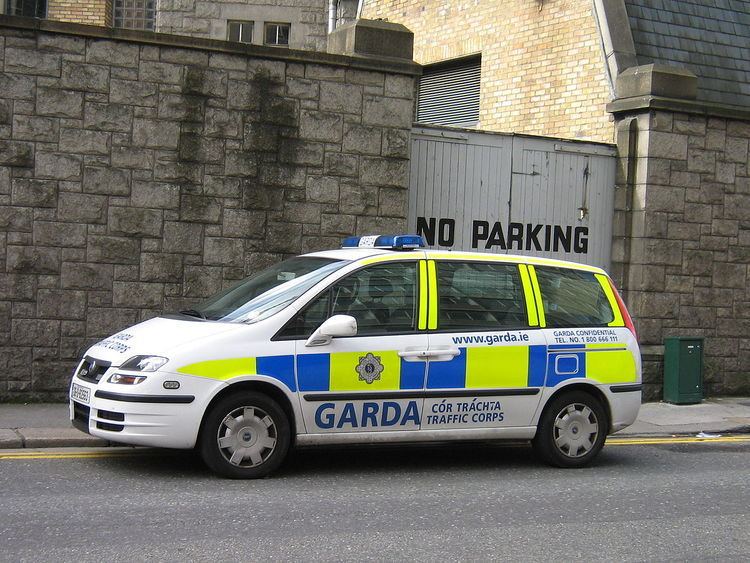 | ||
The Garda Traffic Corps (Irish: Cór Tráchta an Gharda) is a unit of the Garda Síochána under the Road Safety, Law Enforcement Branch.
Contents
Duties
The Traffic Corps' main area of responsibility is ensuring the free movement of traffic and enforcement of all aspects of traffic legislation. The Traffic Corps was established in 1952 and each Garda Division has a Traffic Corps of its own. In Dublin the main Traffic Corps is located at Dublin Castle. It is headed by a Chief Superintendent and under his command are 1 Superintendents, 9 Inspectors, 37 Sergeants, 227 Gardaí and 16 Civilian Support Staff.
The Traffic Corps is present across every county of Ireland; its three largest focus cities are Dublin, Cork and Limerick. Border stations such as the Letterkenny Station in Donegal Division receive a lot of presence. Due to the close proximity of the border with Derry there is an increased chance of vehicles failing to stop, often resulting in high-speed chases. In such cases the Gardaí work closely with the Police Service of Northern Ireland (PSNI) to combat border-driving.
In 2006 The Traffic Corps in every county in Ireland researched Fatal, serious injury, and minor injury collision history that had occurred during the previous 10 years on the primary and secondary roads within each county. All the roads were divided into 5 to 8 mile zones and given an identity incorporating the national route number. Calculations were done on the collision history within each zone and as a result of this the zones were colour coded red amber and green. Red denoting the zones where most collisions occurred. Traffic Corps patrolling was then targeted giving priority to the Red Zones, then the amber zones and so on. This led to a year on year reduction of Fatal Collisions on Irish roads until 2012 when road deaths began to rise again. These zones were called Collision Prone Zones ( CPZ ) a list of which was available on the Garda Website - www.garda.ie. This list has now been replaced by a list of speed enforcement zones used by the operators of speed detection vans. The rise in Road Fatalities seems to have occurred at the same time as the number of Gardaí working in the Traffic Corps was reduced and the number of vehicles available to the Traffic Corps was also reduced.
Vehicles
The Garda Traffic Corps use a wide range of vehicles, ranging from motorcycles to patrol cars and 4x4 jeeps. The "marked" Traffic Corps vehicle are marked differently from standard Garda cars in that they have the words "Garda Traffic Corps" and "Garda Cór Tráchta" on them. They also have high-visibility Battenburg markings.
At present the main Traffic Corps car is the Ford Mondeo, while the Toyota Land Cruiser and Nissan Terrano are the main 4x4s. In recent years the fleet downgraded as a result of financial pressures. Only about one car in three are being replaced. A number of motorcycles were purchased in 2011 but these were Honda Deauville 700cc and not the Yamaha FJR 1300cc which was the previous Traffic motorcycle. Personnel has also been reduced from about 1200 in 2009 to about 800 by the end of 2013.
ANPR (Automatic Number Plate Recognition) has been used by the Traffic Corps since 2009, with about 40% of the Traffic Corps vehicles (cars/jeeps) being fitted with ANPR systems.
There are 116 vehicles in the DMR Traffic Corps fleet (18 February 2011) as follows:
Media
Traffic Blues is a documentary series broadcast on RTÉ One. It follows various traffic officers from the Garda Síochána.
